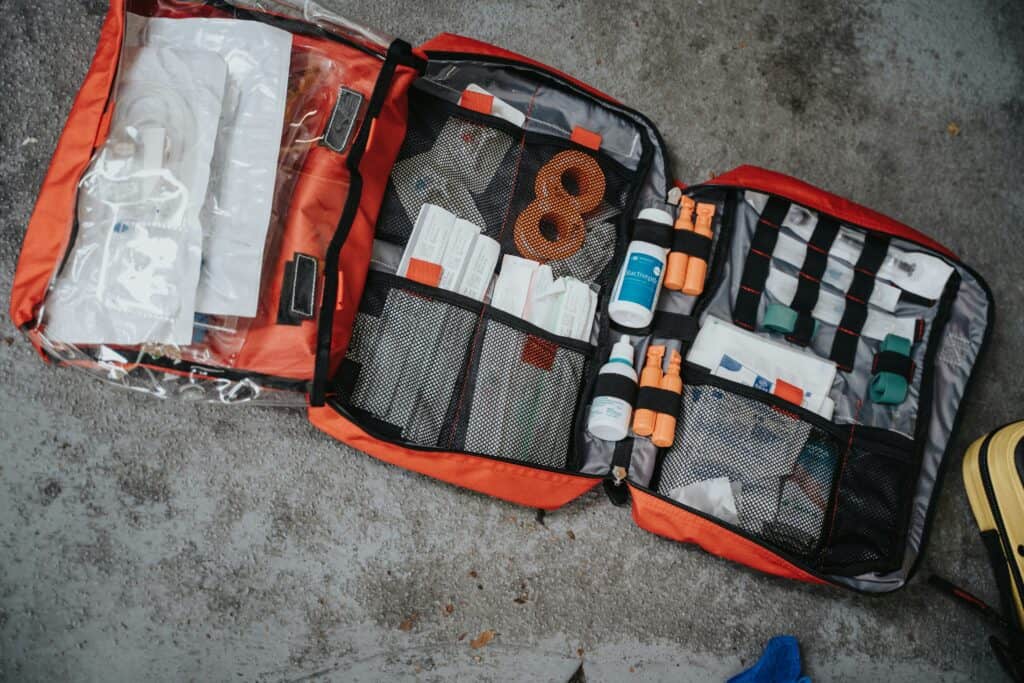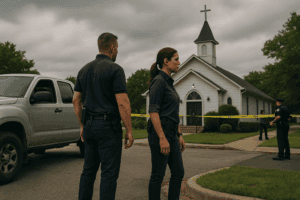Mass gatherings are events that bring together a large number of people in one location for a specific purpose. These gatherings can range from sporting events and concerts to religious activities and political rallies. While mass gatherings can be exciting and enjoyable, they can also pose significant risks.
Ensuring personal safety during mass gatherings is crucial, and it requires careful planning and preparation. Health authorities recommend that individuals assess the risks associated with attending a mass gathering, including the size, duration, and purpose of the event, as well as the location and venue.
Preparing for Mass Gatherings
When attending mass gatherings, it is important to be prepared and aware of your surroundings to ensure personal safety. This section will cover some key aspects of preparing for mass gatherings.
Recognizing and Understanding Your Surroundings
Before attending a mass gathering, it is important to research and understand the location and venue. Knowing the layout of the area can help identify potential exits and safe areas in case of an emergency. It is also important to be aware of any potential hazards or risks in the area, such as uneven terrain or obstacles that could cause tripping or falling.
Identifying Potential Threats at Mass Gatherings
Mass gatherings can be a target for terrorism or other criminal activity. It is important to be aware of any potential threats and to report any suspicious activity to the appropriate authorities.
Unusual behaviors such as unattended items, people acting nervously or suspiciously, unexplained odors, or vehicles moving in abnormal patterns or at high speeds should all raise alarm bells. It is also essential to remember that your personal safety and that of others around you may depend on your willingness to report such unusual activities.
Always alert law enforcement or onsite security personnel about any suspicious observations – your proactive approach might thwart a potential incident, ensuring a safe and enjoyable event for everyone.
Plan for Separation Scenarios
In case of an emergency, it is important to have a plan in place for separation scenarios. This can include designating a meeting spot or having a communication plan in place with friends or family members. It is also important to have a backup plan in case the designated meeting spot is not accessible.
Overall, being prepared and aware of your surroundings is key to ensuring personal safety at mass gatherings. By recognizing potential threats and having a plan in place, you can help reduce the risk of injury or harm.
Key Actions to Take During a Threat Situation
During a mass gathering, it is important to be prepared for potential threats and know how to react in case of an emergency. This section outlines key actions to take during a threat situation, including actions to evade potential threats, self-protection measures during a mass gathering, and actions when confronted by a direct threat.
Actions to Evade Potential Threats
To evade potential threats, it is important to be aware of your surroundings and take steps to minimize your risk. This includes avoiding crowded areas and staying away from suspicious individuals or activities. If you notice anything suspicious, report it to onsite security personnel or law enforcement immediately.
In addition, it is important to have a plan in case you need to evacuate the area quickly. Identify exits and safe areas beforehand and be prepared to move quickly if necessary.
Self-Protection Measures during a Mass Gathering
During a mass gathering, it is important to take self-protection measures to minimize your risk of injury or harm. This includes staying hydrated, wearing comfortable clothing and footwear, and protecting yourself from the sun if the event is outdoors.
If you have a pre-existing medical condition, such as asthma, be sure to bring any necessary medications with you and inform those around you in case of an emergency.
Actions When Confronted by a Direct Threat
If you are confronted by a direct threat, it is important to remain calm and take appropriate action. This may include running away from the threat, hiding in a safe area, or fighting back if necessary.
If you are in a crowded area, try to move toward the edges of the crowd to avoid being trapped or crushed. If you are unable to escape, try to find cover or use any available objects to protect yourself.
In any emergency, it is important to follow the recommendations of health authorities and emergency personnel.
By taking these key actions, individuals can minimize their risk of injury or harm during a mass gathering and help ensure their safety.
Post-Threat Actions and Assistance Measures
During a mass gathering, it is important to know what actions to take after a threat has occurred. This section will cover some of the post-threat actions and assistance measures that can be taken to ensure personal safety.
Making an Emergency Call to 9-1-1
If there is an emergency, it is important to call 9-1-1 immediately. When making the call, provide as much information as possible about the situation, including the location, the type of threat, and any injuries. Follow the instructions given by the operator and remain on the line until help arrives.
Dealing with Secondary Attacks
After a threat has occurred, it is important to remain alert for potential secondary attacks. If there is reason to believe that another attack may occur, move to a safe location and call 9-1-1. If no secure areas are available, protect yourself from harm by seeking cover behind any available natural or artificial objects that eliminate direct line of sight from the source of the hazard.
Offering Assistance and First Aid to Others
If you are in a position to do so, offer assistance and first aid to others who may be injured or in need of help. Call for medical assistance if necessary and provide basic first aid until help arrives. It is important to remember to prioritize your safety when offering assistance.
Coordinating with Law Enforcement and First Responders
It is important to cooperate with law enforcement and first responders after a threat has occurred. Follow their instructions and provide any information that may be helpful. If you witnessed the threat, provide a detailed description of what you saw and heard.
In conclusion, knowing what actions to take after a threat has occurred during a mass gathering is crucial for personal safety. By making an emergency call to 9-1-1, remaining alert for potential secondary attacks, offering assistance and first aid to others, and coordinating with law enforcement and first responders, individuals can help mitigate the impact of a threat and ensure their safety.
Leveraging Additional Resources for Safety at Mass Gatherings
When it comes to personal safety during mass gatherings, there are a variety of resources available to individuals and organizations. These resources can help mitigate risks and improve overall safety. The following sub-sections highlight some of the resources available to communities and organizations.
Hometown Security Initiative
The Hometown Security Initiative is a program that helps communities prepare for and respond to potential terrorist attacks. This program provides resources and training to local law enforcement and emergency responders. The goal of the program is to increase the overall readiness of communities to respond to potential threats.
Active Shooter Preparedness Program
The Active Shooter Preparedness Program is a program that provides resources and training to individuals and organizations to prepare for and respond to active shooter situations. This program includes resources such as webinars, training materials, and a mobile app. The goal of the program is to increase the overall preparedness of individuals and organizations to respond to active shooter situations.
“If You See Something, Say Something®” Initiative
The “If You See Something, Say Something®” Initiative is a public awareness campaign that encourages individuals to report suspicious activity to law enforcement. This initiative provides resources to individuals and organizations to help them recognize potential threats and report them to the appropriate authorities.
Nationwide Suspicious Activity Reporting Initiative
The Nationwide Suspicious Activity Reporting Initiative is a program that encourages individuals and organizations to report suspicious activity to law enforcement. This program provides resources and training to individuals and organizations to help them recognize potential threats and report them to the appropriate authorities.
Overall, leveraging additional resources can help improve personal safety during mass gatherings. These resources can help mitigate risks and improve overall preparedness. However, it is important to note that these resources should be used in conjunction with other safety measures, such as proper sanitation, physical distancing, and infection control measures.
Frequently Asked Questions
What are some personal security measures to take during crowded events?
It is important to remain vigilant and aware of your surroundings during crowded events. Some personal security measures to take include staying with a group, avoiding isolated areas, keeping valuables out of sight, and being aware of emergency exits. Additionally, it is recommended to have a communication plan in case of separation from your group.
What are some recommended safety protocols for large public gatherings?
Recommended safety protocols for large public gatherings include having a designated meeting place, knowing the location of emergency exits, and being aware of the nearest medical facilities. It is also recommended to stay informed of any potential threats or hazards through local news sources and official event communications.
How can I create a personal security plan for attending mass gatherings?
To create a personal security plan for attending mass gatherings, it is recommended to research the event and location beforehand, have a communication plan with your group, and be aware of emergency procedures. It is also important to have a backup plan in case of unexpected circumstances.
What are the potential health hazards associated with attending mass gatherings?
Potential health hazards associated with attending mass gatherings include heat exhaustion, dehydration, and injuries from crowds. It is recommended to take necessary precautions such as staying hydrated, wearing appropriate clothing, and being aware of first aid stations.
What factors are considered in the risk assessment for mass gatherings?
Factors considered in the risk assessment for mass gatherings include the location, size, and type of event, as well as the potential for natural disasters or other emergencies. Security measures and emergency response plans are put in place based on the level of risk identified by the assessment.
How does the Department of Homeland Security recommend preparing for workplace violence in crowded places?
The Department of Homeland Security recommends preparing for workplace violence in crowded places by having a plan in place for emergencies, training employees on how to respond to potential threats, and conducting regular drills. It is also recommended to have a system in place for reporting and addressing any concerning behavior or threats.








